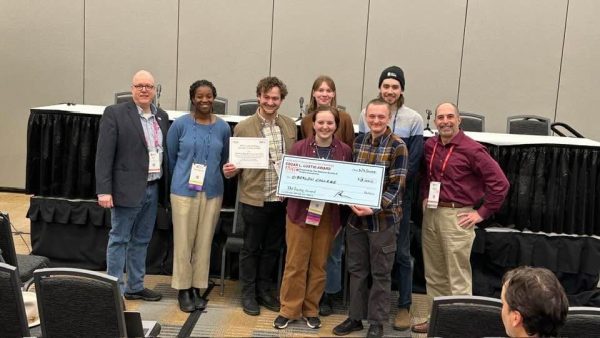College Seeks to Address Course Registration Challenges
The course registration period for the upcoming spring semester concluded today following concerns that class offerings across several departments had been restricted this past fall due to a number of factors, including faculty leaves. Some students and faculty members feel that students — particularly first-year students — had more difficulty registering for classes than in previous semesters. Others, including Acting Dean of the College of Arts and Sciences David Kamitsuka, argue that the data don’t support this conclusion.
According to Professor and Chair of Economics Ron Cheung, who sat on the steering committee of last year’s Academic and Administrative Program Review, the Economics department has experienced a general trend of classes filling up more often in recent years.
“I believe that our faculty size has not grown in proportion to the growth of our majors and the popularity of our classes,” Cheung said. “We are noticing that our classes are filling up, going to capacity, which gives us a sense that basically we need more faculty members.”
Other faculty echoed similar sentiments about their own departments, including Professor and Chair of Psychology Nancy Darling, Associate Professor and Chair of Biology Roger Laushman, and Professor and Chair of Politics Steve Crowley.
According to each chair, departments can find themselves short-staffed for various reasons. Laushman and Cheung cited a coincidentally high number of sabbaticals this year, while Darling mentioned a recent increase in student interest in psychology.
“We’ve been really successful in our recruitment, which means there’s more students, and when you have more students you need more faculty,” Darling said. “We are at full capacity. We can’t just say, ‘Oh, we will make the classes bigger,’ because then it’s not an Oberlin class.”
For his part, Crowley mentioned that the impact of sabbaticals was ultimately less significant than he originally anticipated.
“I think we have been able to fill those gaps pretty well, and we are hoping to hire some more folks for the spring,” he said.
Despite the challenges noted by these faculty, Associate Dean for Academic Advising and Registrar Liz Clerkin said she didn’t notice much of an impact on course registration for first-year students.
“I do not perceive that students had more difficulty registering for courses this year,” Clerkin wrote in an email to the Review. “[M]y observation was that first-years were able to complete their schedule at the same rate as in years past.”
Kamitsuka mostly agreed, citing numbers that showed little change in the proportion of courses that were fully enrolled at the end of the Add/Drop period.
“In Fall 2018, 28 percent of courses were fully enrolled; this fall, 29 percent of courses are fully enrolled,” he wrote in an email to the Review. “Unfortunately, due to unforeseen personnel issues, we had three or four first-year seminar section cancellations this year. I’m sure that made a difference in some cases for first-year students.”
Ultimately, 42 first-year seminars were offered this fall, compared to 48 in fall 2018. Last year, approximately 45 percent of seminars reached full enrollment; this year, about 72 percent filled up, and only 12 had open seats by the end of Add/Drop, according to OberView, Oberlin’s course management platform. Laushman and Cheung both mentioned that allowing faculty to offer first-year seminars can restrict a department’s course offerings; Cheung specifically said that Economics chose not to offer a seminar this year due to a lack of available staff.
Kamitsuka noted that in recent years, departments have offered more courses during “prime hours” and on a Tuesday–Thursday schedule, in addition to offering fewer evening seminars.
“The concentration of classes in prime hours does make access to classes more difficult,” he wrote. “We need to continue to review course scheduling and course enrollment limits for access and equity.”
Clerkin specifically cited the introduction of an automated waitlist as one step the Academic Advising Resource Center is taking to make course registration smoother and more accessible.
“In the past … it was not clear if [a] student would get into [a] class; it was left to the faculty member to manage the enrollment,” Clerkin wrote. “This year, if the class had an automated waitlist running, the first-years had data immediately available to them that indicated their chance of getting into the course.”
Currently, only some faculty have opted into using the automated waitlist, and the AARC hopes to expand the practice in the future. Kamitsuka hopes that, once practical challenges are addressed, a data-driven approach will improve accessibility.
“They can save time for all concerned,” he wrote. “If utilized effectively, the waitlist data could be very helpful in matching course offerings to student interest in taking the courses in future semesters.”





